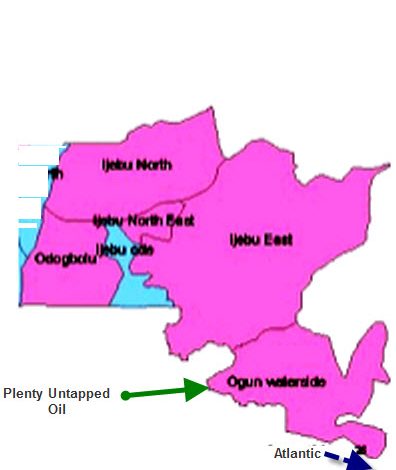Ijebu State – The ABCD of State Creation In Nigeria

By Dele Okenla Esq.
Much has been written about the process of creating a new state in Nigeria but let us look at what the law, in this instance the Constitution of the Federal Republic of Nigeria 1999 (as amended) says:
“Chapter 1 Section 8. New States and Boundary Adjustment, etc.
(1) An Act of the National Assembly for the purpose of creating a new State shall only be passed if-
(a) a request, supported by at least two-thirds majority of members (representing the area demanding the creation of the new State) in each of the following, namely
(i) the Senate and the House of Representatives,
(ii) the House of Assembly in respect of the area, and
(iii) the local government councils in respect of the area, is received by the National Assembly;
(b) a proposal for the creation of the State is thereafter approved in a referendum by at least two-thirds majority of the people of the area where the demand for creation of the State originated;
(c) the result of the referendum is then approved by a simple majority of all the States of the Federation supported by a simple majority of members of the Houses of Assembly; and
(d) the proposal is approved by a resolution passed by two-thirds majority of members of each House of the National Assembly.”
CREATION OF NEW STATES:
The guidelines for creating a new state in Nigeria is simple and straightforward, easy to understand even though it may appear difficult to accomplish.
Section 8, Subsection 1 of the Constitution of the Federal Republic of Nigeria 1999 (as amended) indicates four stages in the process of creating a new state.
Those stages are listed as paragraphs (a) to (d) in the subsection and appear to be in sequential order particularly given the use of the word “thereafter” in paragraph (b)to indicate that the chain of events is intended to be consecutive.
Before going further, I would like to emphasize here that a state cannot be created by impunity in a democratic dispensation and can only be created if due process is rigidly followed.
Section 8, subsection 1, paragraph (a) of the Constitution of the Federal Republic of Nigeria 1999 (as amended) listed the first stage as submitting a request to the National Assembly supported by a given percentage of elected representatives in the designated area of the proposed state.
This first stage can be satisfied by submitting a resolution signed by the given percentage of the elected representatives to the office of the Clerk of the National Assembly.
In the case of the proposed Ijebu State, for instance, which covers one Senatorial district, three Federal Constituencies and nine local governments, the minimum required signatories to any resolution to request a new state covering the whole Senatorial district would be:
1. Signature of Senator
2. Signatures of two (2) Reps
3. Signatures of Members of the House of Assembly from six (6) local government areas.
4. Signatures of Councillors and Chairmen from six (6) local government areas.
The first step therefore is to produce this resolution and submit it to the Clerk of the National Assembly.
The second stage of the process of state creation as stipulated by Section 8, subsection 1, paragraph (b) indicates that a referendum would be called once the requirement in paragraph (a) has been completed. There is no indication here of any parliamentary debate or legislative discretion. Once the requirement in paragraph (a) has been met, paragraph (b) imposes the automatic call for a referendum thereafter.
The possible challenge here in the second stage is determining who calls for the referendum or to put it more succinctly, who authorises INEC to conduct a referendum in the designated area. Is it the Clerk of the National Assembly that notifies INEC or is it the state creation agitators that notify INEC? These questions reveal a crucial lacuna in the process.
Notwithstanding the inadequacy of the provisions of paragraph (b) as stated above, the unequivocal fact remains that it is REFERENDUM that follows the SUBMISSION OF REQUEST for state creation if properly done in concordance with paragraph (a).
The third stage in the creation of a new state in Nigeria is captured in the Constitution of the Federal Republic of Nigeria 1999 (as amended) Section 8, subsection 1, paragraph (c) and it calls for a RATIFICATION of the REFERENDUM mentioned in paragraph (b) by a simple majority of all the Houses of Assembly in the federation each by a simple majority vote.
What this means is that at least 19 Houses of Assembly out of the 36 states in Nigeria must approve a positive result from the referendum and such approval must be decided by a majority vote in each of the respective Houses of Assembly.
Before we go on to the fourth and final stage of the guidelines for the creation of a new state in Nigeria, it is important to note that the various stages so far outlined are in an undeniable exact sequential order, (a) then (b) followed by (c) and not (c) before (b) or (b) before (a).
The fourth and final stage in the creation of a new state in Nigeria is encapsulated in the Constitution of the Federal Republic of Nigeria 1999 (as amended) Section 8, subsection 1, paragraph (d) and it indicates that after all the stipulates of paragraphs (a), (b) and (c) have been complied with, it is now left for each chamber of the National Assembly to approve the new state a two-thirds majority vote.
THE REAL REASON WHY MOST OF THE AGITATIONS FOR THE CREATION OF A NEW STATE IN NIGERIA ARE NOT SAILING THROUGH IS THAT EXPONENTS ARE ALMOST INVARIABLY PUTTING THE CART BEFORE THE HORSE BY ANCHORING MORE ON THE FOURTH AND FINAL STAGE RATHER THAN NAVIGATING THROUGH THE CORRECT SEQUENTIAL ORDER OF (a), (b), (c), (d).
Kehinde Omodeleola Okenla
Solicitor/Advocate, Supreme Court of Nigeria.
16 November 2025








